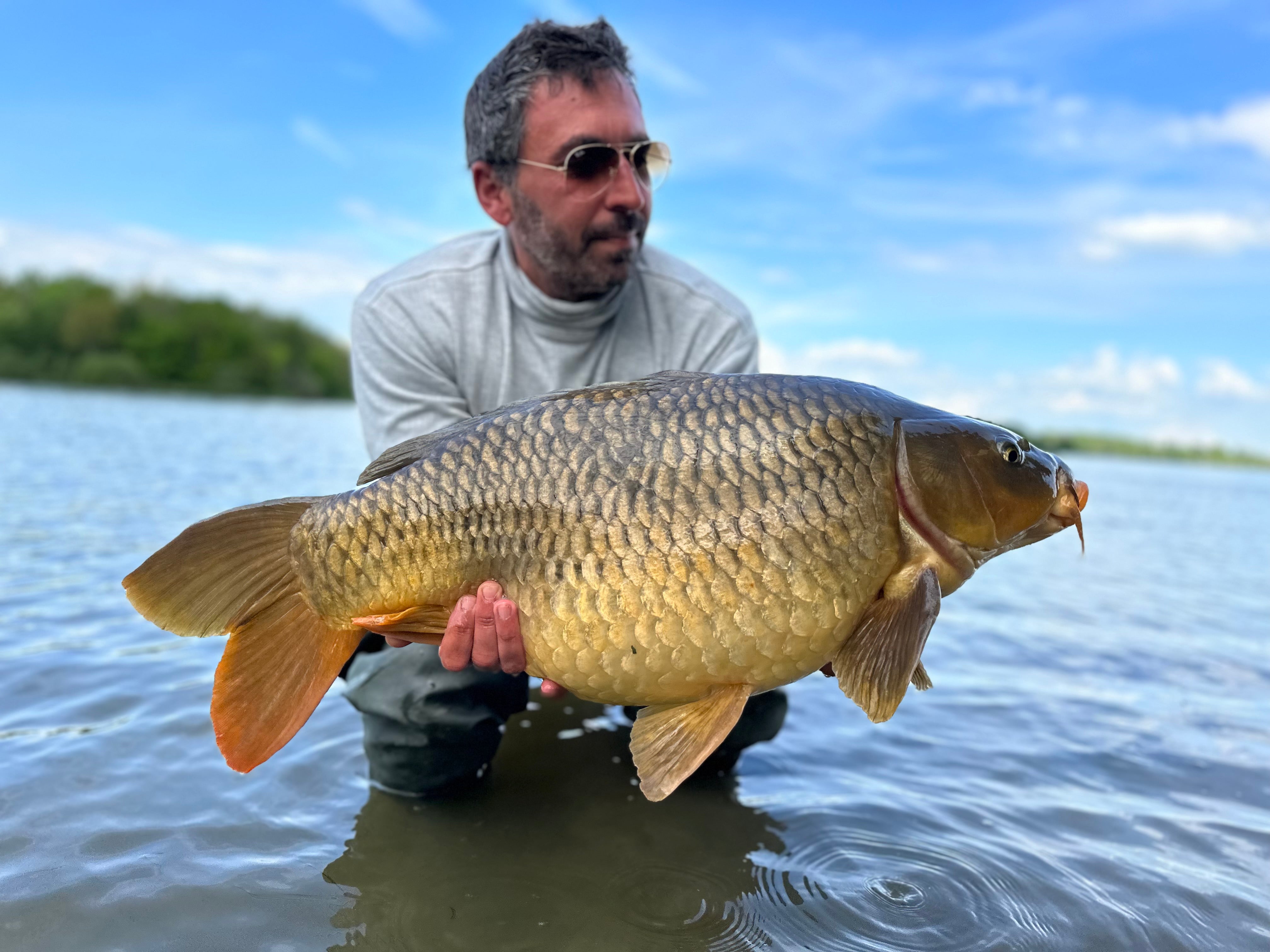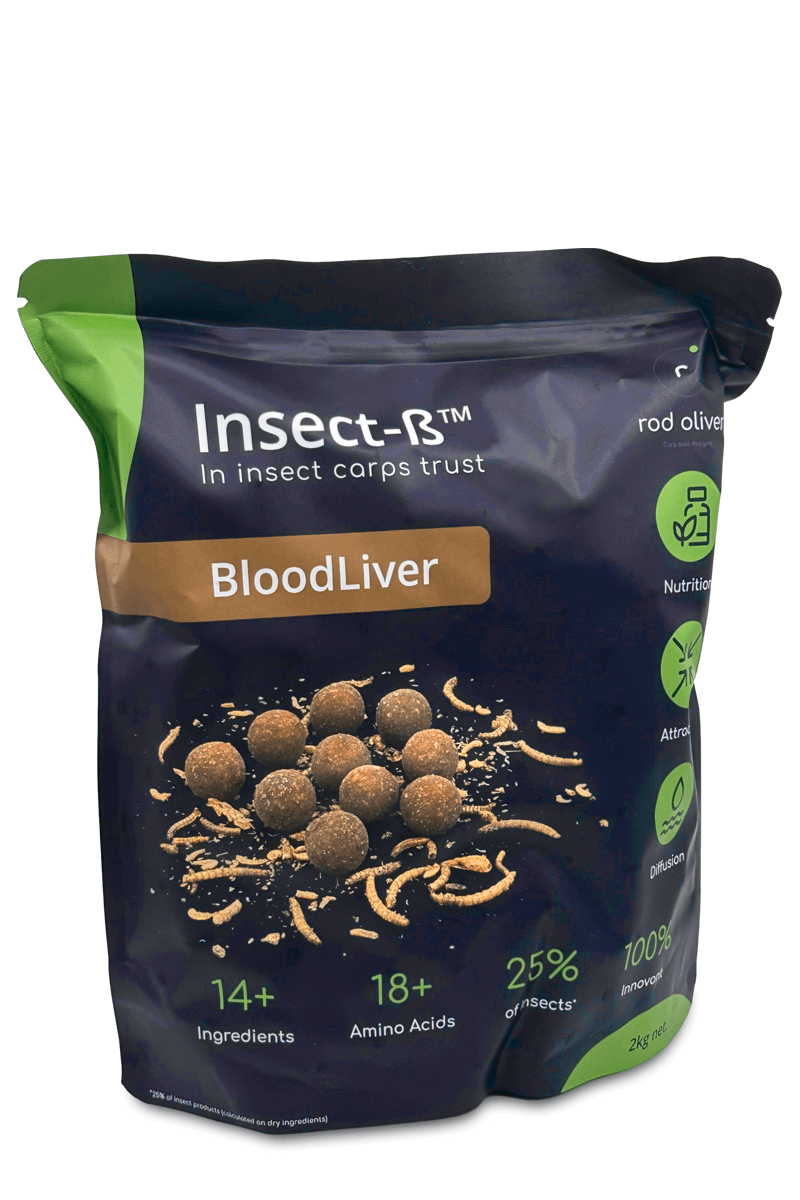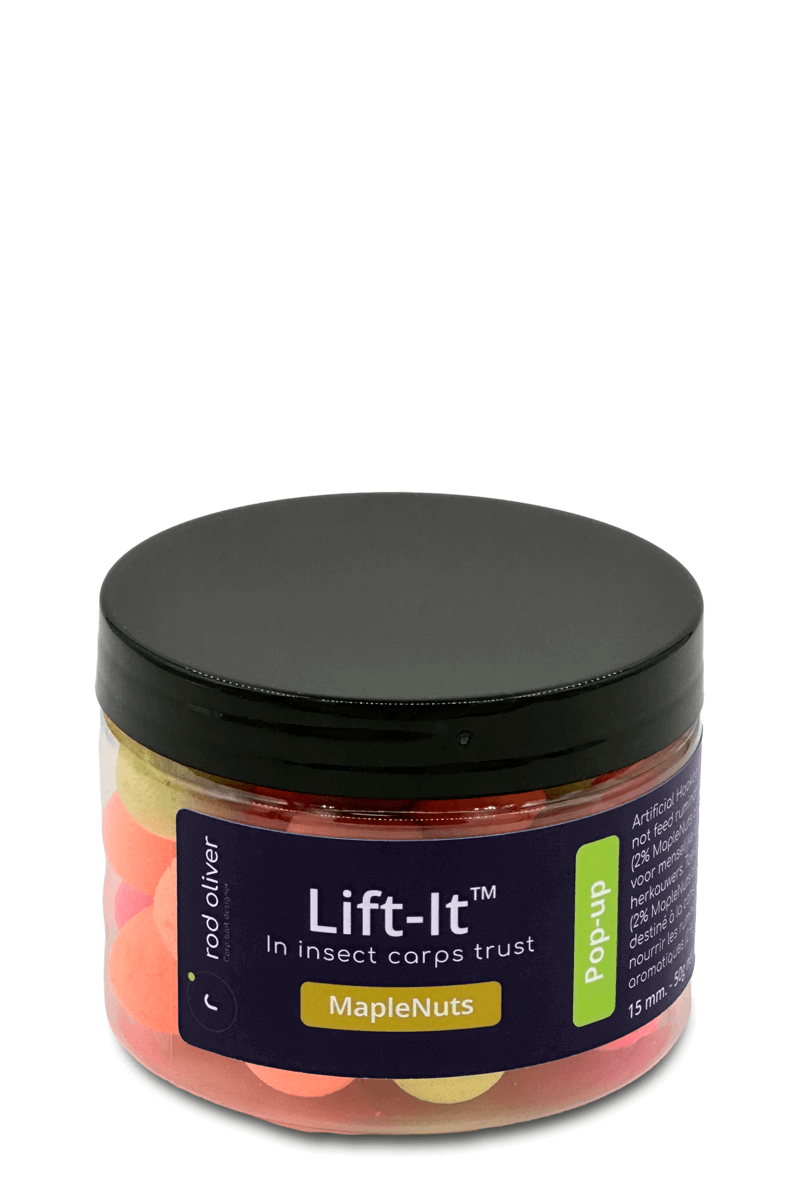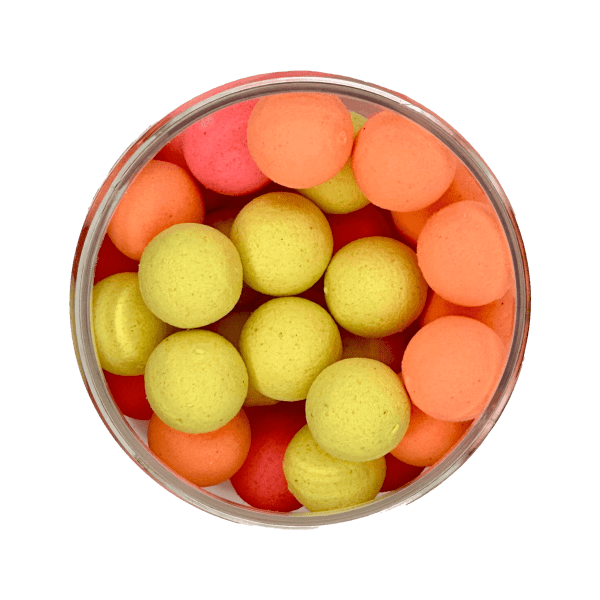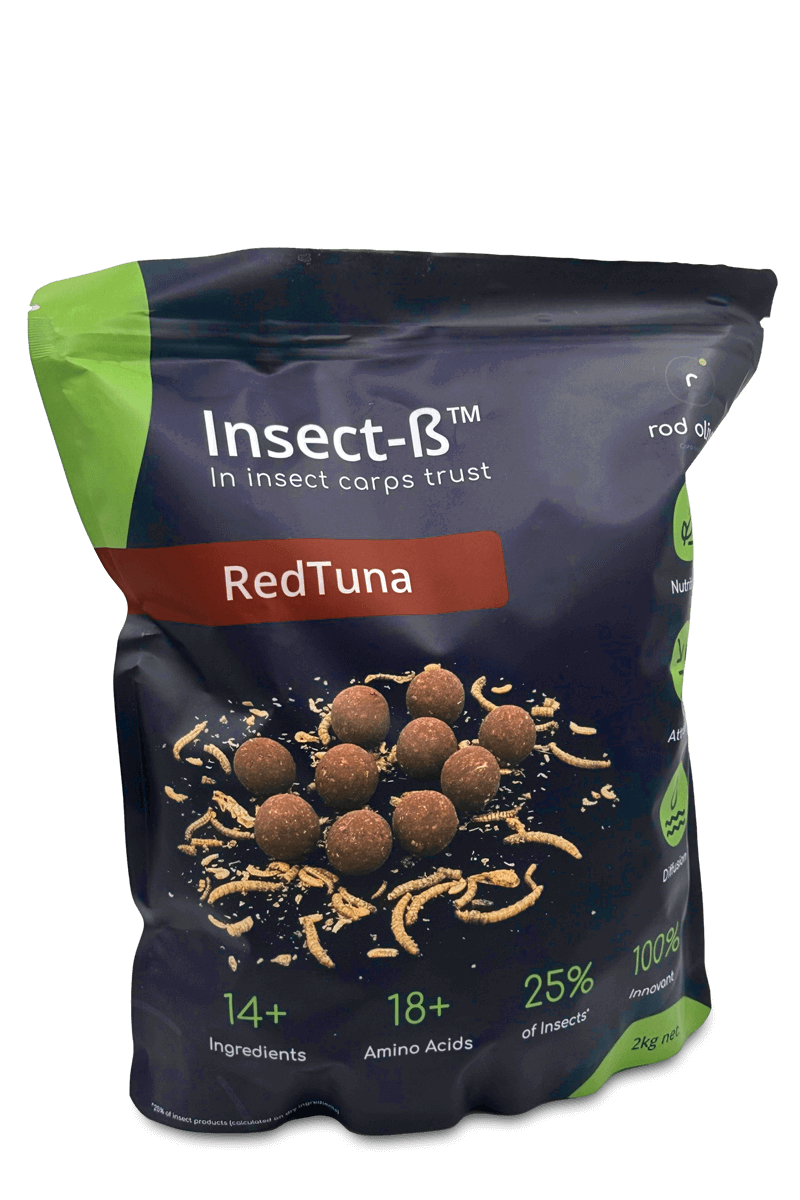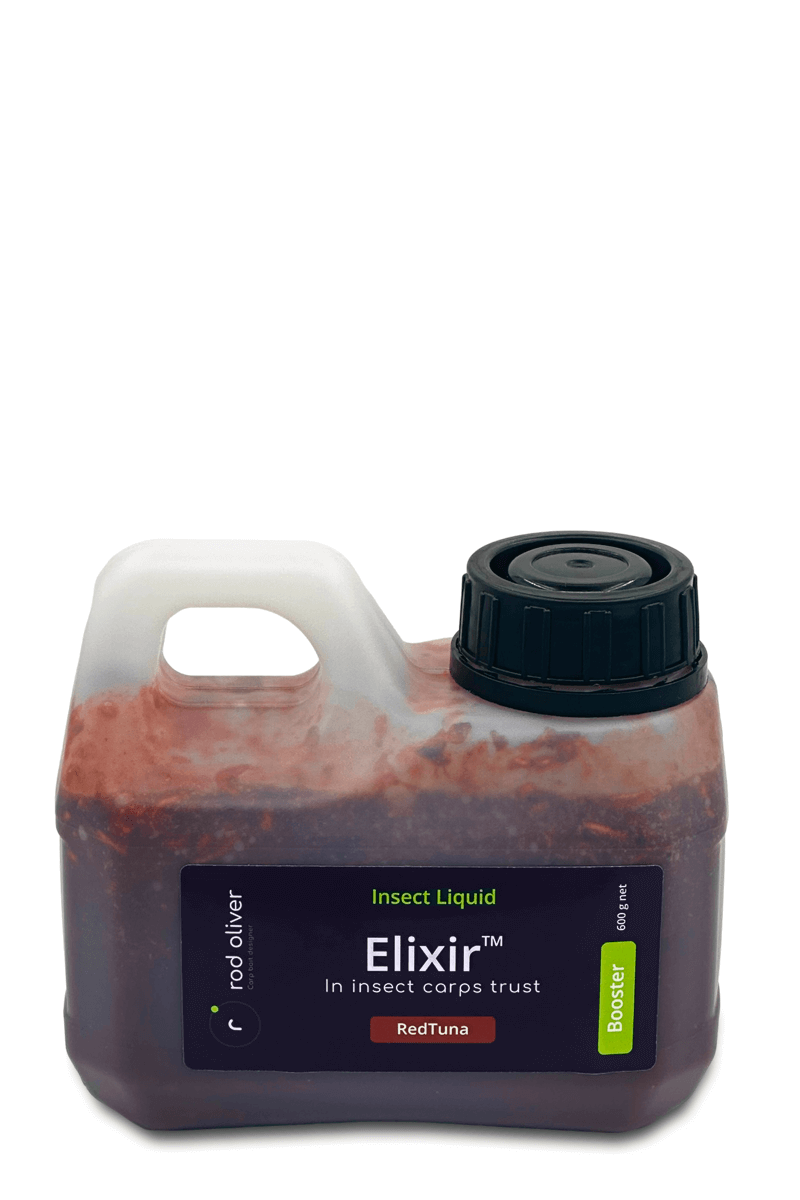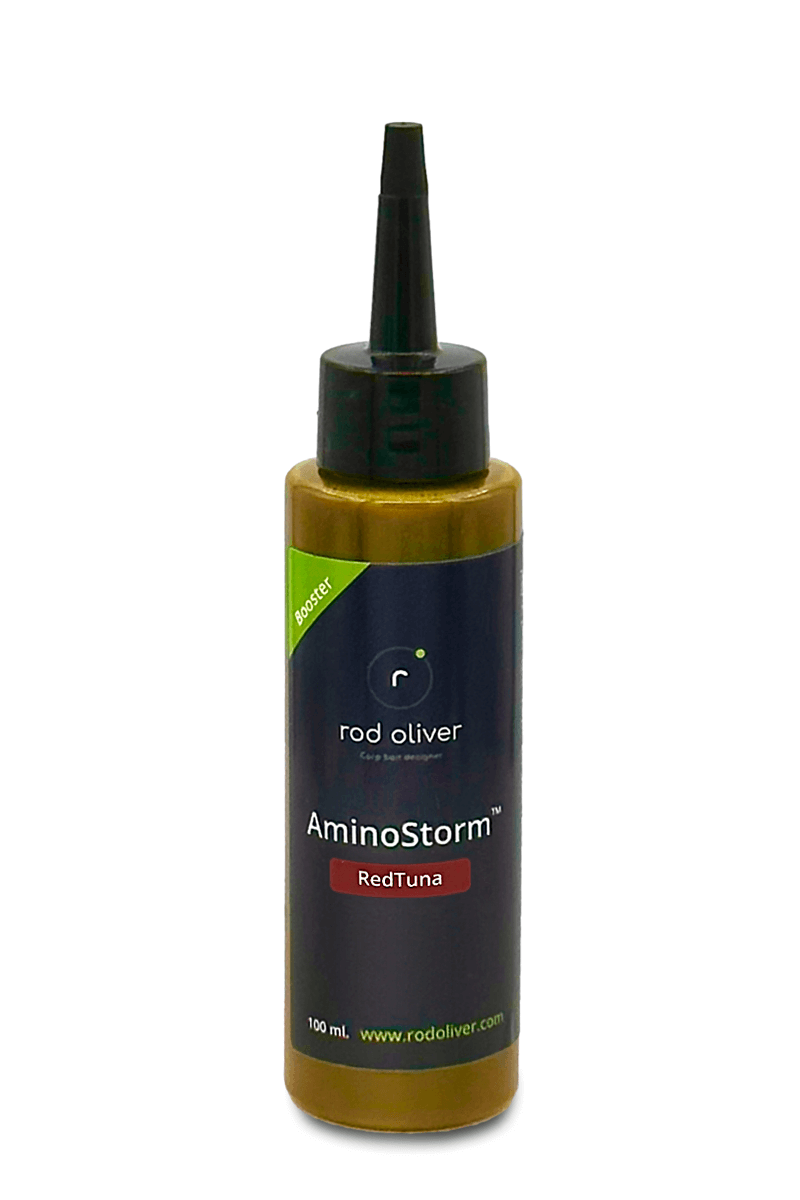What size of boilies should you choose for carp fishing?
The choice of boilies size for carp fishing is a topic that frequently occupies the minds of carp anglers. Although most anglers use 15 and 20 mm boilies, other options are possible and can impact the fishing outcome.
Table of content
1. Introduction
2. Correlation between Boilie Size and Attractiveness Mechanics
2.1 Boilie Size
2.2 Boilie Volume
2.2.1 Calculating Boilie Volume
2.2.2 Volume Comparison Based on Boilie Size
2.3 Surface Area of a Boilie
2.5 Cubes: Another Alternative to Increase Volume and Surface Area
2.5.1 Volume of a Cubic Boilie
2.5.2 Surface Area of a Cubic Boilie
3. The Size of Boilies and Carp Reaction
3.1 What is the Size of Carp's Natural Food?
3.2 Does Boilie Diameter Affect Carp's Wariness?
4. Boilie Size and Carp Weight
5. Conclusion
1. Introduction
One of the advantages of using this fantastic bait known as boilies is the ability to choose from a variety of sizes. This freedom provides numerous tactical possibilities that can address a wide range of fishing situations.
In this article, we will review the different possible sizes for our favorite baits and explain the potential consequences of these choices. In any case, whether they are standard 20 mm balls, 12 mm micro-boilies, or jumbo ones over 30 mm, all of them will enable you to catch carp.
2. Correlation between Boilie Size and Attractiveness Mechanics
2.1 Boilie Size
Boilies can be manufactured in various sizes, typically ranging from 12 to 30 mm, but smaller and larger sizes are also available on the market. The size of boilies corresponds to their diameter, meaning that a 20 mm boilie has a diameter of 20 mm.
Before choosing the size of boilies, it's important to understand the impact it can have on their attractiveness to carp. All else being equal, attractiveness is strongly correlated with a bait's diffusion capability. In other words, a boilie that diffuses extensively will have greater attractiveness than one that diffuses less.
Of course, this will depend on the type of ingredients used, including their solubility.
However, the size of the boilie plays a fundamental role, often wrongly overlooked, in the mechanics of attractant diffusion and thus its attraction capacity.
2.2 Boilie Volume
2.2.1 Calculating Boilie Volume
The size, volume, and surface area of a boilie are three distinct pieces of information, each with its own significance and importance. Since a boilie is generally a sphere, it is easy to calculate both the volume and surface area.
The volume of a boilie can be calculated as follows:
Boilie Volume (V) = (4/3)πr³
where:
Boilie Volume (V) is the volume of the space inside the boilie.
π (pi) is a mathematical constant, approximately 3.14159.
r is the radius of the boilie, meaning the distance from the center of the boilie to any point on its surface (diameter / 2).
If the size of a boilie is commonly expressed by its diameter, its volume represents the amount of material it contains.
For example, a 20 mm boilie will have a volume of (4/3) * 3.14159 * (20/2)³ = 4189 mm³
2.2.2 Volume Comparison Based on Boilie Size
Now that we can calculate the volume of a boilie, it's interesting to note that volume increases more rapidly than the boilie's size.
For instance, a 30 mm boilie, having a diameter twice as large, will have a volume eight times larger. Indeed, the volume of a 30 mm boilie is 14,137 mm³, while that of a 15 mm boilie is only 1,767 mm³.
Therefore, a 30 mm boilie will contain eight times the amount of attractants as a 15 mm boilie of the same recipe. In other words, it would take eight 15 mm boilies to generate the same quantity of nutrients and attractants as a single 30 mm boilie.
Hence, it's evident that a 30 mm boilie will be capable of diffusing a significantly larger amount of attractants than a 15 mm boilie. This is simply a matter of physics, without any value judgment or opinion.
2.3 Surface Area of a Boilie
The surface area of a boilie also plays an important role. It's essential to remember that attractant diffusion occurs through contact between the boilie's surface and water, which means that the more surface area the bait offers, the greater its diffusion capacity will be.
To revisit the same comparison between a 30 mm boilie and a 15 mm boilie, a 30 mm boilie has a diameter twice as large as a 15 mm boilie, but it provides a much larger contact surface with the water.
The formula for calculating its surface area is as follows:
Boilie Surface Area (A) = 4πr²
Where:
Boilie Surface Area (A) is the outer surface area of the boilie.
π (pi) is a mathematical constant, approximately 3.14159.
r is the radius of the boilie, which is the distance from the center of the sphere to any point on its surface (diameter / 2).
According to this mathematical formula, the surface area of a 15 mm boilie is 706.85 mm². Using the same formula, the surface area of a 30 mm boilie is 2,827.43 mm².
Thus, a 30 mm boilie offers 2,827.43 mm² of contact surface with the water, while a 15 mm boilie offers only 706.85 mm², which is nearly four times less.
So, from a physics standpoint, it can be affirmed that a 30 mm boilie will diffuse attractants approximately four times more easily than an identical boilie in composition but with a diameter half as small. Furthermore, due to its size, a 30 mm boilie will diffuse attractants for a much longer duration than a 15 mm boili2.4 Comparative Table of Boilie Sizes, Volumes, and Surface Areas
Therefore, the size of the boilie plays a predominant role in the diffusion of nutrients and attractants. For illustration, it's worth noting that a 30 mm boilie, having double the diameter of a 15 mm boilie, will diffuse approximately four times better a quantity that is eight times greater of ingredients and attractants.
All else being equal, from a purely physical standpoint, a 30 mm boilie is significantly more attractive than a 15 mm boilie.
Here's a brief summary of different boilie sizes to assist you in your choices.
|
Boilie diameter (mm) |
Boilie volume (mm^3) |
Boilie surface (mm^2) |
|
12 |
905 |
452 |
|
14 |
1.437 |
616 |
|
15 |
1.767 |
707 |
|
16 |
2.145 |
804 |
|
18 |
3.054 |
1.018 |
|
20 |
4.189 |
1.257 |
|
22 |
5.575 |
1.521 |
|
24 |
7.238 |
1.810 |
|
28 |
11.494 |
2.463 |
|
30 |
14.137 |
2.827 |
|
32 |
17.157 |
3.217 |
|
36 |
24.429 |
4.072 |
2.5 Cubes: Another Alternative to Increase Volume and Surface Area
If we extend our reasoning further and attempt to move away from the spherical boilie pattern, the cubic shape presents an interesting profile to maximize the earlier observations.
Indeed, due to their shapes, a cube and a sphere with the same side length and diameter will not have the same volume or surface area. In any case, a cube will always have a larger volume and area.
2.5.1 Volume of a Cubic Boilie
To calculate the volume of a cubic boilie, you should use the following formula:
Volume of the cubic boilie (B) = Side³
where:
Volume of the cubic boilie (B) is the volume of the space inside the boilie.
Side represents the length of one side of the boilie.
Let's revisit the example of 15 mm and 30 mm: A cubic boilie with a side length of 15 mm will have a volume of 3,375 mm³ compared to 1,767 mm³ for a spherical boilie of the same size. Therefore, a cube-shaped boilie will have 1.91 times more ingredients and attractants.
A cubic boilie with a side length of 30 mm will have a volume of 27,000 mm³ compared to 14,137 mm³ for the same-sized spherical boilie, making it 1.91 times more, but it will have 15.28 times more volume than a spherical 15 mm boilie.
2.5.2 Surface Area of a Cubic Boilie
The surface area in contact with water of a cube-shaped boilie can be calculated as follows:
Surface Area of the cubic boilie (B) = 6 * (Side²)
where:
Surface Area of the boilie (B) is the total external surface area of the boilie.
Side represents the length of one side of the boilie.
A cubic boilie with a side length of 15 mm will have an area of 1,350 mm² compared to 707 mm² for a spherical boilie of the same size. Therefore, a cube-shaped boilie will diffuse ingredients and attractants 1.91 times better.
A cubic boilie with a side length of 30 mm will have an area of 5,400 mm² compared to 2,827 mm² for the same-sized spherical boilie, making it 1.91 times more, but it will have 7.6 times more surface area than a spherical 15 mm boilie.
In conclusion, to maximize diffusion and attractant quantities, it's advisable to use large cubic boilies.
3. The Size of Boilies and Carp Reaction
We have demonstrated, in a simple and purely physical manner, that larger boilies outperform smaller ones in terms of diffusion and attractiveness. However, in practice, other factors and realities can come into play, adding complexity to our analysis.
3.1 What is the Size of Carp's Natural Food?
One approach to address the question of choosing boilie sizes is to consider the size of the natural food that carp regularly consume. When examining the carp's diet, it becomes evident that these fish rarely feed on natural prey as large as our boilies.
Although many anglers fantasize about carp consistently feeding on large crayfish or 10 cm mussels, the reality is quite different: the vast majority, if not nearly all, of the natural food that carp consume consists of benthic organisms measuring only a few millimeters at most.
If we follow this observation and aim to mimic the carp's natural food as closely as possible with our boilies, it then seems wise to prioritize small-sized balls.
3.2 Does Boilie Diameter Affect Carp's Wariness?
The relationship between carp's wariness and boilie size can be complex to assess and demonstrate. One might think that anything different from the norm could alarm the fish. However, it's important to note that carp are also curious and don't shy away from exploring new things.
To succeed, it's often essential to create familiarity with the bait to reduce the risk of rejection by carp. When considering using larger boilies in a given location, it may be wise to conduct preliminary baiting without fishing. Allowing carp to return to the site regularly, they will become accustomed to finding accessible and safe food there. This can help reduce their wariness towards larger-sized baits.
It is common for carp anglers to recommend using small-sized boilies in highly frequented areas for discretion. However, it should be noted that there can be significant differences between popular beliefs and reality. In overfished areas, it is true that the frequent use of small-sized boilies is common. However, carp can become wary of this limited offering. In such situations, choosing to fish with a larger boilie, like a jumbo over 28 mm, can make a difference in overcoming carp's wariness.
Ultimately, there is no single rule regarding boilie size because it depends on many factors, including the fishing frequency of the area, carp behavior, and their level of wariness. Constant adaptation to the situation and careful observation of carp reactions to your baits will be essential to maximize your chances of success in catching these cautious and cunning fish.
4. Boilie Size and Carp Weight
The average weight of captures is positively correlated with boilie size. In simple terms, large boilies equate to large carp. While we cannot categorically prove this through a purely heuristic approach, empirical experience readily confirms it.
If we examine a complete year of fishing, an obvious correlation emerges: the average weight of carp caught with 28 mm and larger boilies is generally higher than that of carp caught with boilies under 16 mm.
This doesn't mean that it's impossible to catch large carp with small-sized boilies. However, the likelihood of capturing smaller carp with larger-diameter boilies is significantly reduced.
Under equal conditions, you may catch a higher number of carp with small-sized boilies, but their average weight will be lower. Conversely, the total number of large carp can sometimes be higher with 15 mm boilies than with boilies over 30 mm.
The reason is quite simple: large boilies are more selective because smaller carp struggle to swallow large-diameter boilies.
Furthermore, large boilies tend to lead to more hook pulls for the same reason. In any case, it is essential to match the size of your hooks to your baits. Large boilies should be mounted with larger hooks, and vice versa for small-sized boilies.
5. Conclusion
The choice of boilie size is a fundamental element in carp fishing and should not be taken lightly. We have examined in detail how boilie size influences their attractiveness, their ability to diffuse attractants, and carp reactions.
On one hand, it is clear that larger boilies have a distinct advantage in terms of diffusion and attractiveness. Their greater volume allows them to contain more ingredients and attractants, while their larger surface area in contact with the water promotes more efficient diffusion.
On the other hand, we have addressed the issue of carp's wariness towards boilie size. It is true that carp can sometimes be wary of unusually large or small boilies. However, there is no strict rule in this regard, as other factors, such as fishing frequency and carp behavior, also come into play. Constant adaptation to the situation and careful observation of carp reactions are essential for choosing the right boilie size.
Finally, we have emphasized the correlation between boilie size and the average weight of captures. While it is not an absolute rule, it is generally observed that larger boilies tend to catch larger carp. However, this does not mean you cannot catch large carp with small-sized boilies.
The choice of boilie size should be guided by a deep understanding of the fishing situation, carp behavior, and the dietary preferences of these fish. Empirical approaches, based on on-site experience, remain one of the best methods for determining which boilie size works best in a given situation.
Tight lines !
rod oliver
